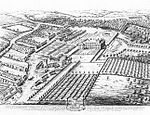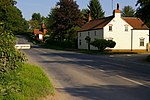Kiplingcotes Derby
1519 establishments in EnglandHorse races in Great BritainRecurring events established in the 16th centuryRecurring sporting events established in the 16th centurySport in the East Riding of Yorkshire ... and 1 more
Use British English from January 2015

Kiplingcotes Derby (also spelt Kipling Cotes), run at Kiplingcotes in the East Riding of Yorkshire, is widely accepted to be the oldest annual horse race in the English sporting calendar. It reputedly began in 1519 and takes place on the third Thursday in March, often in exceptionally adverse weather conditions. The 500th race took place on 21 March 2019.One quirk of the ancient rules means that the second place rider often receives more in prize money than the winner. It is run, not over a typical modern racecourse, but partly along the wide verge of a roadside. A clerk is paid 5 shillings (25p) annually for maintaining it.
Excerpt from the Wikipedia article Kiplingcotes Derby (License: CC BY-SA 3.0, Authors, Images).Kiplingcotes Derby
Geographical coordinates (GPS) Address Nearby Places Show on map
Geographical coordinates (GPS)
| Latitude | Longitude |
|---|---|
| N 53.919 ° | E -0.64 ° |
Address
YO43 3LS , Middleton
England, United Kingdom
Open on Google Maps








